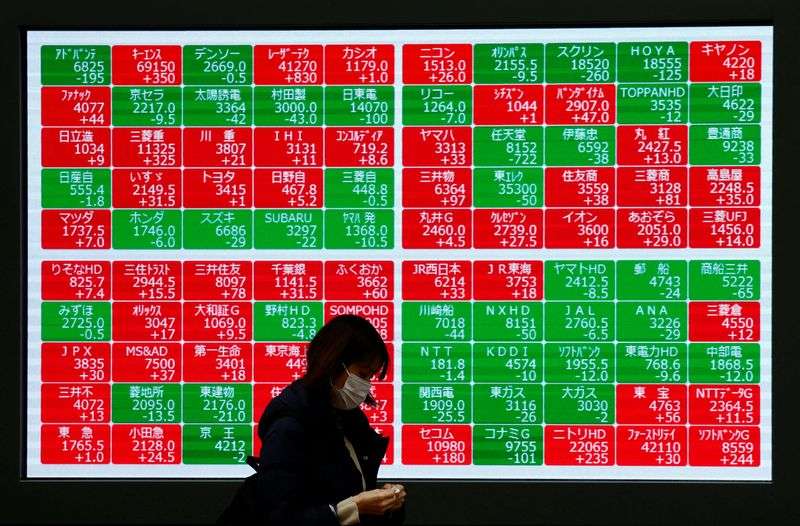Anticipation builds as the core personal consumption expenditures (PCE) inflation metric is set for release, with analysts forecasting a 0.2% increase for November. This could influence investor expectations around U.S. monetary policy easing. The Treasury market faces challenges with rising interest rates, while Asian stocks show mixed performance. The strong U.S. dollar impacts commodities, leading to declines in oil and gold prices. Concerns linger over geopolitical issues and central bank strategies heading into 2025.
Anticipation Surrounds Key Inflation Indicator
The core personal consumption expenditures (PCE), a crucial inflation metric, is set to be released today, capturing the market’s attention. Analysts predict a monthly rise of 0.2% for November, and any unexpected increase could prompt investors to reassess their expectations regarding the easing of U.S. monetary policy in the coming year.
Currently, futures are pricing in only 37 basis points of rate cuts by the Federal Reserve in 2025, translating to fewer than two anticipated reductions after the central bank expressed a more optimistic outlook during its final meeting of the year. A rate cut is not widely expected until June.
Treasury Market and Global Stock Performance
Interest rates are projected to hit 3.9% by the end of next year, significantly higher than levels observed just a few months back. This outlook has negatively impacted the Treasury market, where the benchmark 10-year yields have surged by 40 basis points over the past fortnight, crossing the critical threshold of 4.5% for the first time since May.
In the Asian markets, the MSCI index tracking Asia-Pacific stocks, excluding Japan, dipped by 0.4% on Friday, signaling a weekly decline of 2.6%. However, it has seen a notable increase of over 8% year-to-date. Meanwhile, Japan’s Nikkei index rose by 0.2% on the same day, boasting a 16% gain for the year, partly fueled by the yen’s weakness which has fallen 12% in 2024, leading to intervention warnings from Japanese officials.
As global central banks wrap up a tumultuous year marked by rate adjustments, the UK, Japan, Norway, and Australia have held their rates steady, while Switzerland and Canada opted for a 50 basis point cut during their last meetings of the year. The Swedish Riksbank and the European Central Bank also implemented reductions of 25 basis points recently.
“The heightened concerns regarding geopolitics and uncertainty as we approach 2025 are evident,” stated James Rossiter, head of global macro strategy at TD Securities. “Central banks are agilely preparing for a more dynamic policy landscape in 2025.”
In China, blue-chip stocks fell by 0.3%, while Hong Kong’s Hang Seng index saw a slight rise of 0.2%. The People’s Bank of China decided to keep its benchmark lending rates unchanged, aligning with market predictions.
Within the currency markets, the U.S. dollar remains strong, holding at its highest level in two years against major currencies at 108.45, enjoying an interest rate advantage. It is close to a five-month peak of 157.5 yen after a 1.7% surge overnight, following the Bank of Japan’s decision to maintain its rates and dovish comments from Governor Kazuo Ueda regarding wage prospects and the impact of prior policies.
Recent data indicated that Japan’s core inflation accelerated in November, strengthening the case for a potential short-term rate hike. Market sentiment is divided on the likelihood of a Bank of Japan action in January, with 53% pricing in that possibility.
The euro has experienced a 1.3% decline this week, trading at $1.0364 and approaching a significant support level of $1.0331. The British pound is also on track to lose 1% this week, currently at $1.2489, nearing the critical threshold of $1.2484.
Looking ahead, Treasuries are poised for a fourth consecutive year of losses, with 10-year yields climbing 70 basis points this year, including a 17 basis point increase this week to reach 4.57%.
The commodities market is similarly affected by the robust U.S. dollar, with oil prices experiencing a decline on Friday. U.S. West Texas Intermediate (WTI) crude fell by 0.5% to $69.06, marking a 2.7% drop for the week. Meanwhile, gold prices are projected to decrease by 1.9% this week, settling at $2,598 an ounce.
